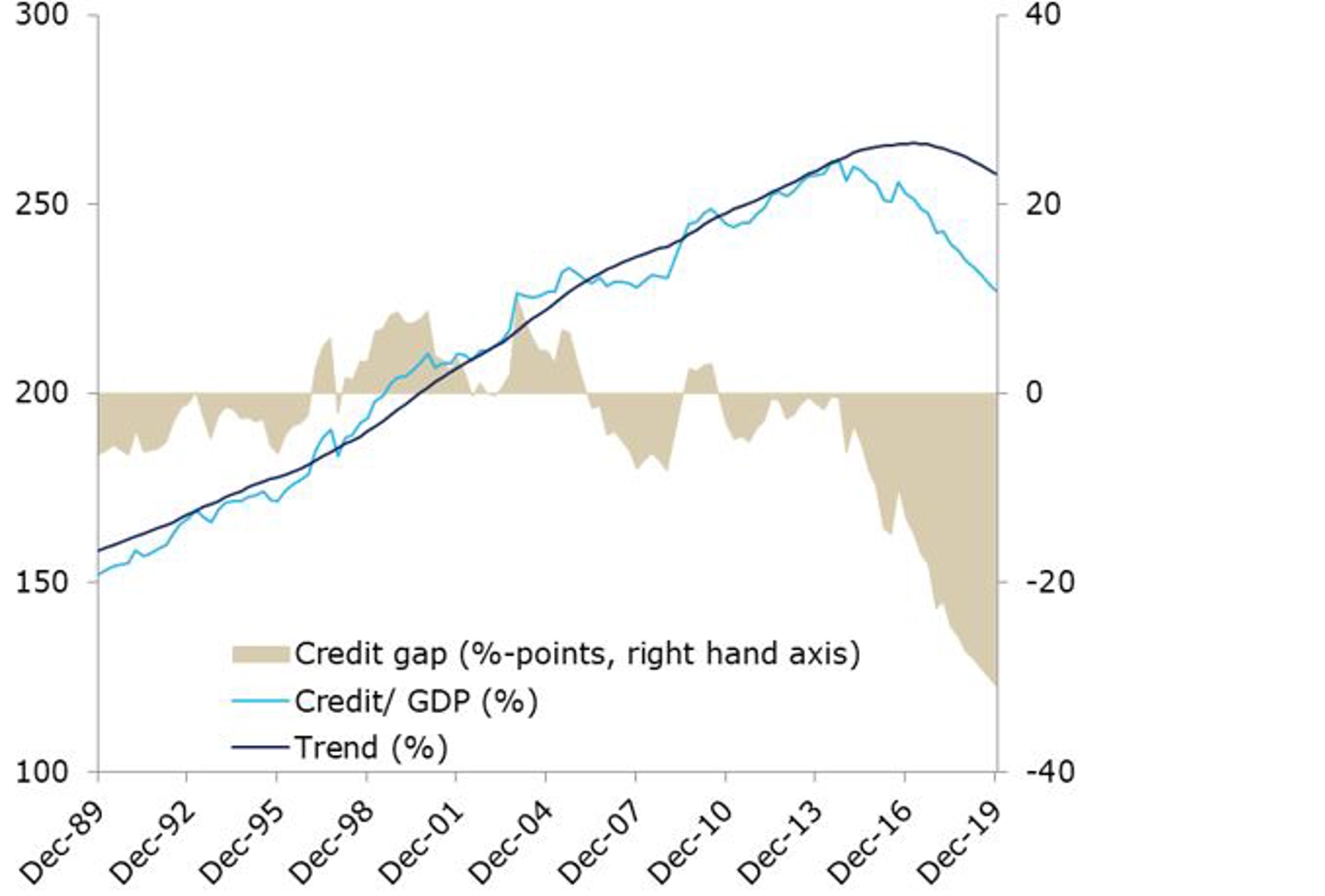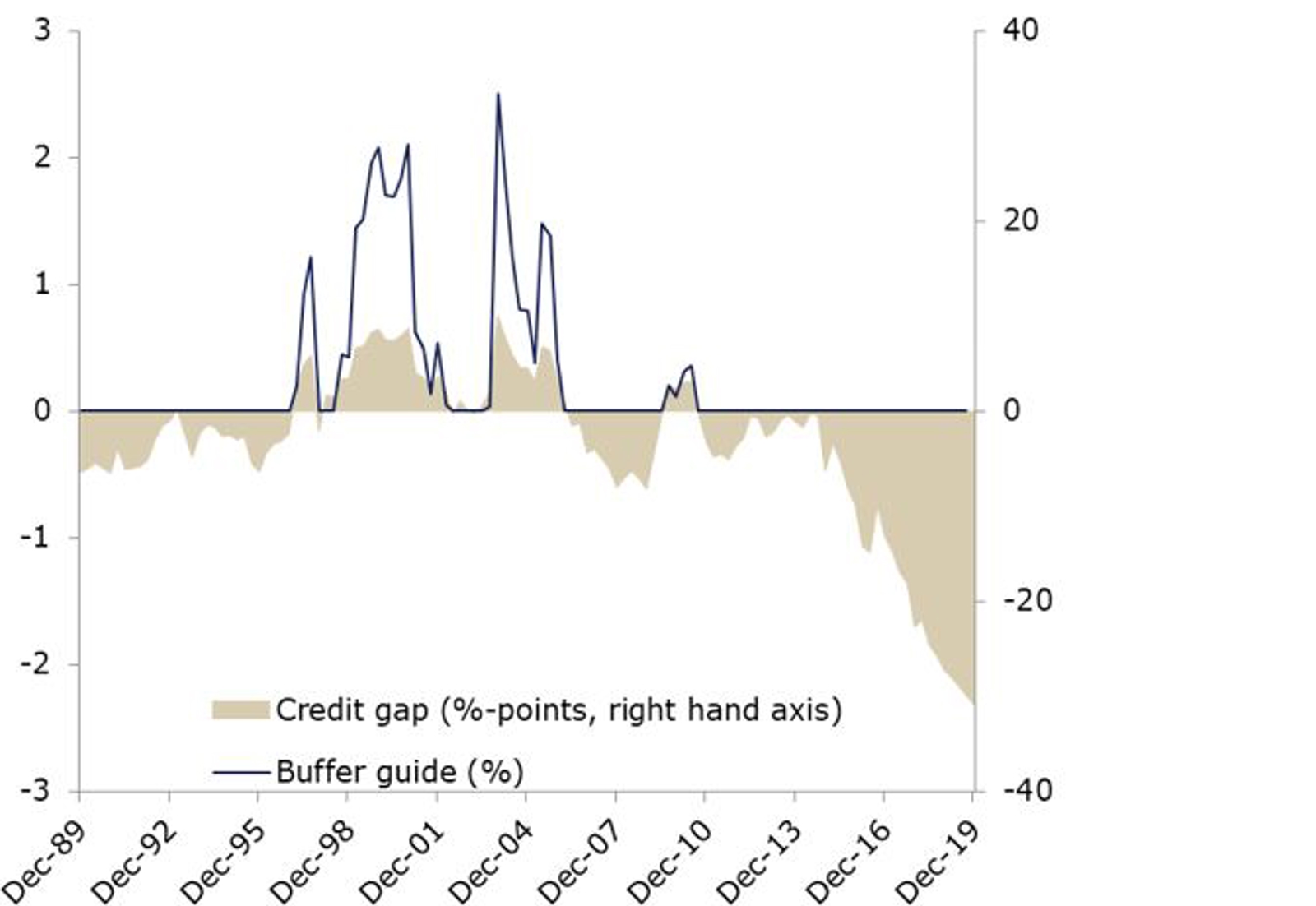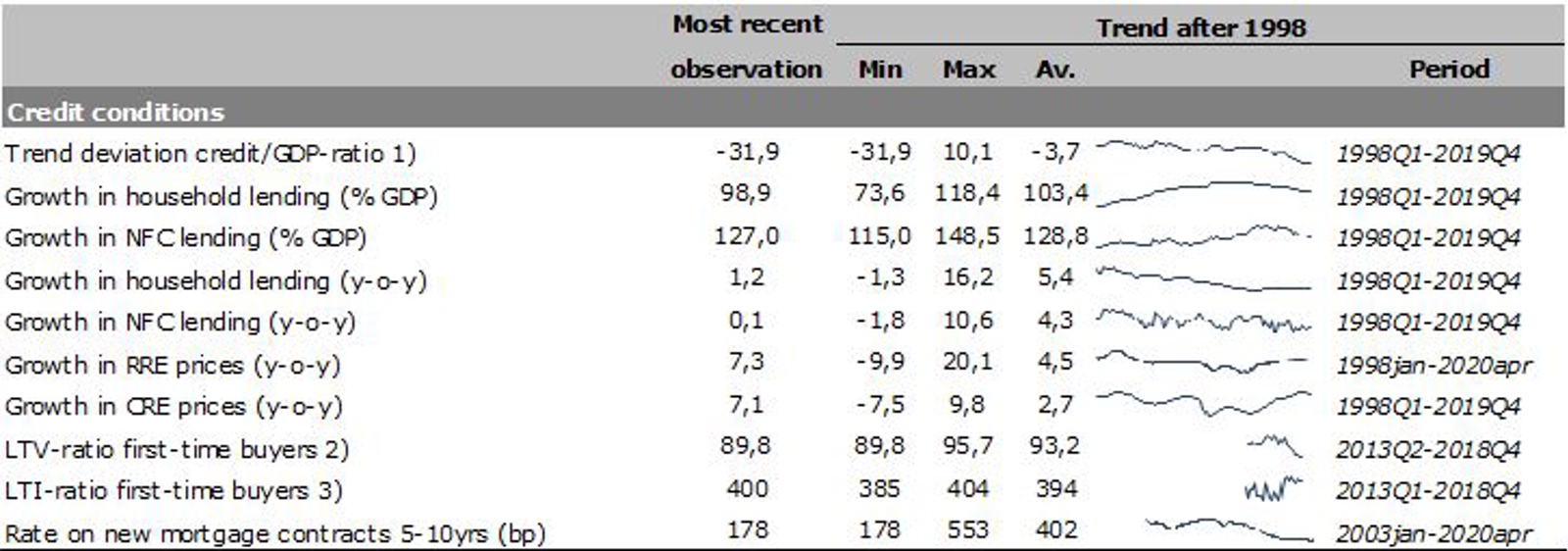Since January 2016, DNB publishes the CCyB add-on on a quarterly basis, in accordance with the prevailing rules and regulations. Banks are required to apply the add-on to their exposures to Dutch counterparties. As a rule, CCyB decisions are internationally recognised instruments, which means that non-domestic banks must apply the add-on set by DNB to their Dutch exposures.
At the last decision in March 2020, DNB left the CCyB unchanged at 0 percent. One of the main considerations underlying this decision has been the subdued trend of credit growth. This situation has not fundamentally changed: lending is still showing below-trend growth (Chart 1). This credit gap, as it is known, is internationally considered as one of the key indicators for the CCyB. Besides the credit gap, DNB also considers other variables such as trends in real estate prices and credit growth in subsectors (Table 1).
Based on these developments, DNB has decided to leave the CCyB unchanged at 0 procent. The recent decision by DNB to reduce the systemic buffers has no impact on this decision. Having said this, DNB intends to build up a CCyB of 2% in the foreseeable future. Additional information can be found here.






